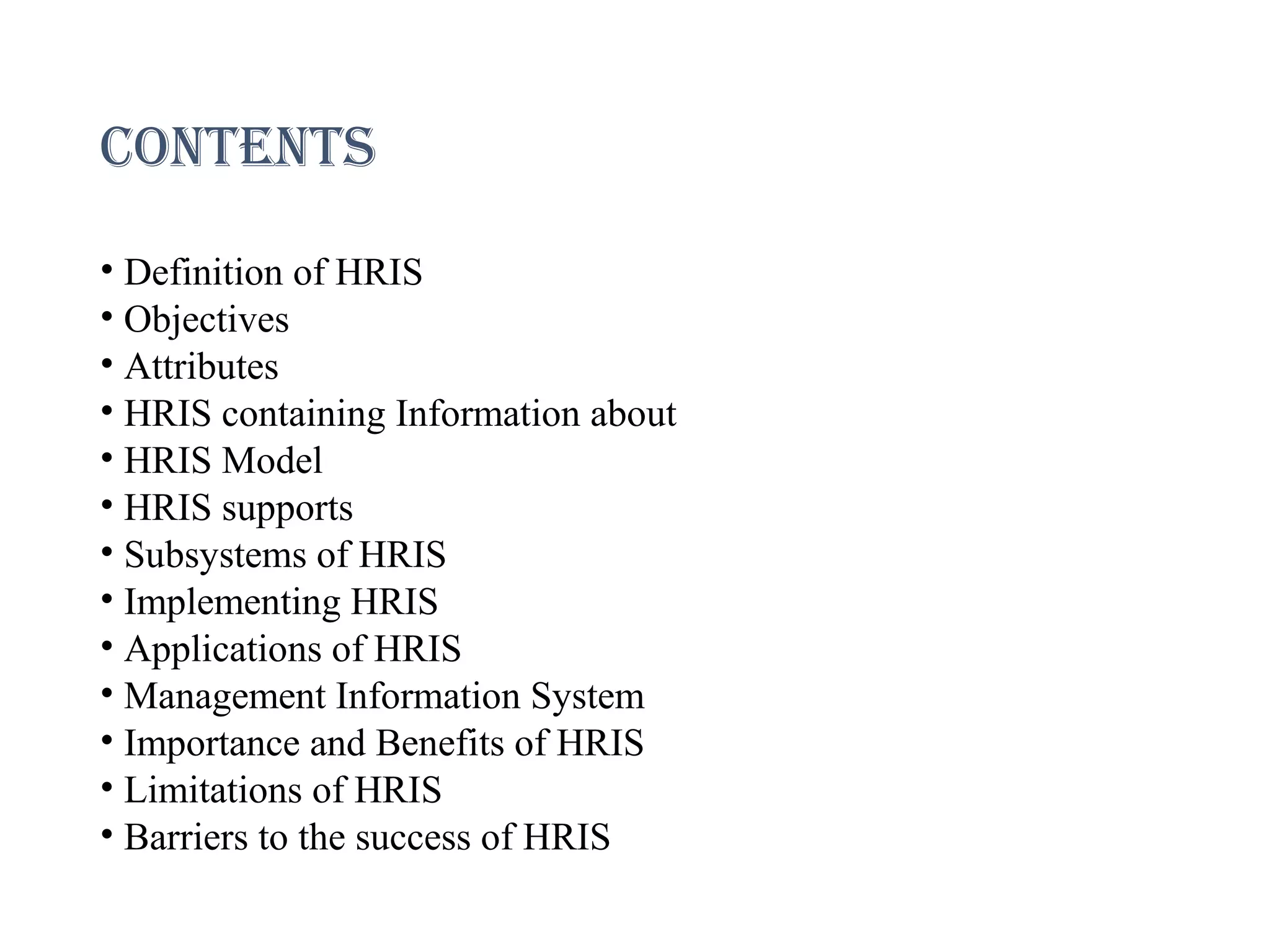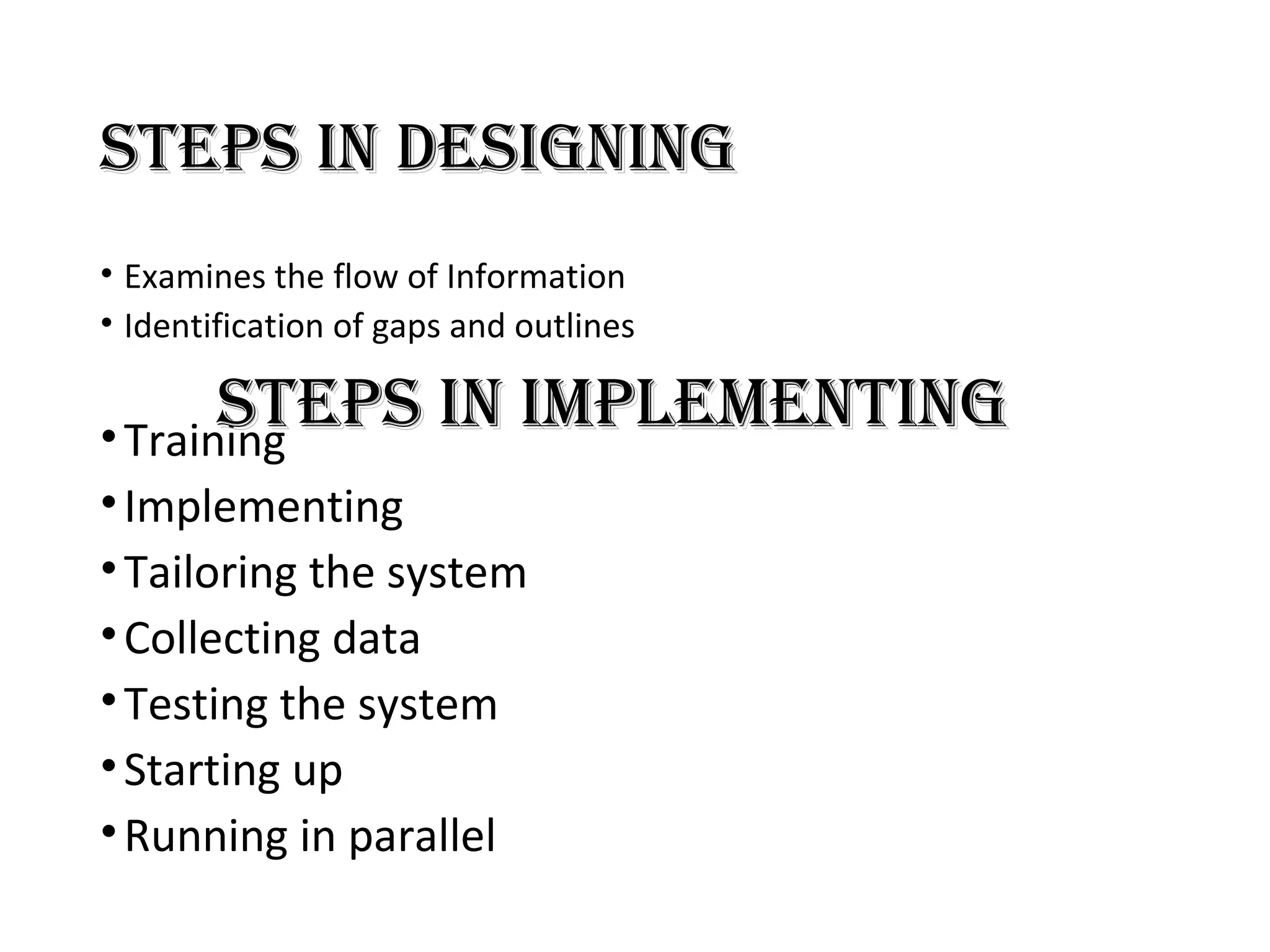This document discusses human resource information systems (HRIS). It begins by defining HRIS as a systematic way to store and analyze employee data to aid decision making. The objectives of HRIS are to provide comprehensive and up-to-date information at a reasonable cost while ensuring data security and privacy. HRIS contains information on jobs, positions and people. It supports strategic, tactical, and operational human resource functions. Common HRIS subsystems include recruitment, payroll, and performance appraisal. Implementing HRIS involves planning, analysis, design, implementation and maintenance. HRIS provides benefits like faster data retrieval and processing, reduced costs, and more effective decision making. However, limitations include potential expenses and issues with computer literacy.





















